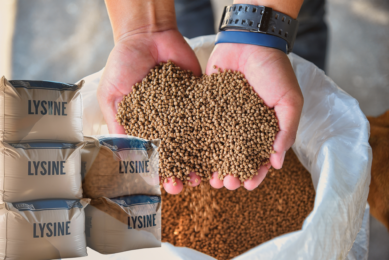Research: Effect of phytase on ileal level broiler chickens
The effects of phytate and phytase on the endogenous flows of minerals and amino acids at the ileal level of broiler chickens were investigated using purified diets.
A total of 96, 17-day-old female Arbor Acres broilers were randomly allocated to 4 treatments.
The birds received the same purified basal diets according to a 2×2 factorial arrangement of treatments, with the factors in the study being two levels of phytate phosphorus (2.0 or 4.0 g/kg; as-fed basis) in the presence or absence of Escherichia coli-derived phytase (500 FTU/kg), until birds were 21 days of age.
Results
The results showed that phytate decreased the ileal flows of Fe (15%) and Cu (18%), but not for Mn, Zn, Mg, K and Ca.
Supplemental phytase decreased the flows of Mn (8%), Fe (21%) and K (13%), but not for Zn, Cu, Mg and Ca.
Phytate increased the ileal flows of most amino acids by 7–27%, but reduced the ileal flow of Thr, and phytase decreased amino acid flows by 4–22%.
The interactions of phytate and phytase were significant on the ileal flows of K, Cys and Tyr.
Conclusion
The results suggest that phytate may reduce amino acid utilization by increased endogenous losses but increase mineral utilization under conditions of feeding purified diets.
The addition of microbial phytase may improve mineral and amino acid nutrition by decreasing their endogenous losses in the intestine of broiler chickens.
The full article and references are available from ScienceDirect: Effect of phytate and phytase on the ileal flows of endogenous minerals and amino acids for growing broiler chickens fed purified diets – N. Liu, School of Animal Science, Henan University of Science and Technology, China and Y.J. Ru, Danisco Animal Nutrition, Singapore











